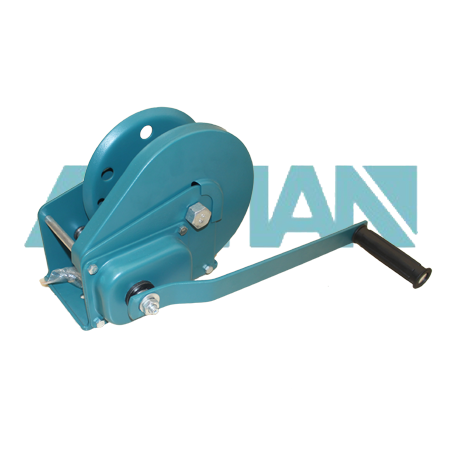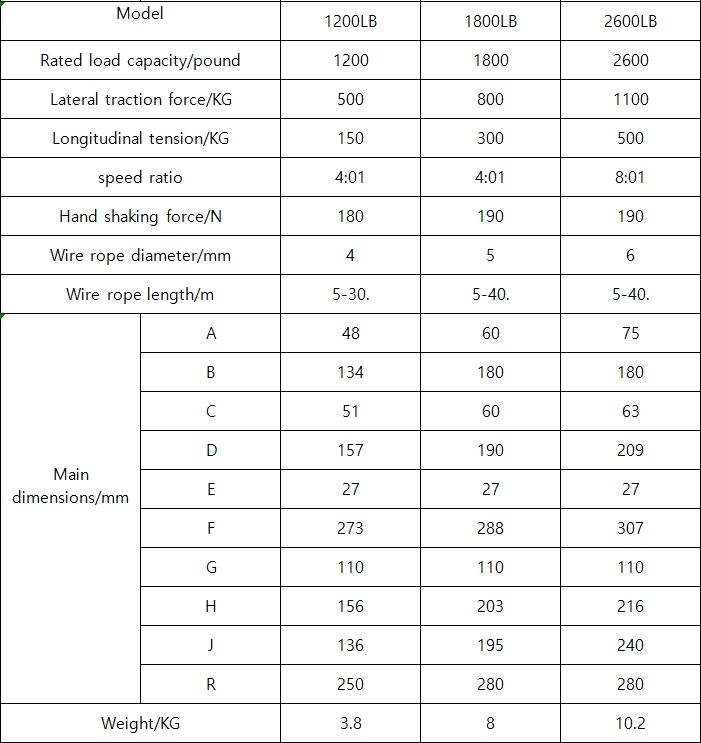 中文版
中文版



Welcome to contact us by phone:0086-0312-7969888
Manual winches are constructed using a variety of materials to ensure durability, strength, and resistance to environmental factors. The specific materials used can vary based on the design, manufacturer, and intended application of the winch. Here are common materials used in the construction of manual winches:
Frame and Housing:
Steel: Steel is a popular choice due to its strength and durability. It can withstand heavy loads and offers resistance to impact and wear.
Aluminum: Aluminum is lighter than steel, making it suitable for applications where weight is a consideration. It also has good corrosion resistance.
The frame or housing of a manual winch is often made from robust materials that provide structural integrity. Common materials include:
Gears:
Steel Alloys: High-strength steel alloys are commonly used for gears due to their ability to handle heavy loads and resist wear.
Brass or Bronze: These materials are used for smaller gears or applications where corrosion resistance is a priority.
The gears inside the winch are crucial components that transmit the rotational force from the crank handle to the winch drum. Common materials for gears include:
Winch Drum:
Steel: Steel winch drums are durable and capable of handling heavy loads.
Aluminum: Aluminum winch drums are lighter and suitable for applications where weight is a concern.
The winch drum is the component around which the cable or rope is wound. Materials used for winch drums include:
Cable or Rope:
Steel Cable: Steel cables are strong and durable, suitable for heavy-duty applications.
Synthetic Rope: Synthetic ropes made of materials like high-strength fibers (e.g., nylon or polyester) are lighter and may be used when weight is a consideration.
The cable or rope used for lifting or pulling is typically made from materials with high tensile strength. Common options include:
Handle or Crank:
Steel: Steel handles are durable and provide strength for manual operation.
Plastic or Rubber Coating: Handles may have a plastic or rubber coating for user comfort and grip.
The handle or crank is the manually operated lever that users turn to operate the winch. Materials for handles include:
Fasteners and Hardware:
Steel: Steel fasteners provide strength and durability.
Nuts, bolts, and other fasteners used in the assembly of the winch are typically made from materials such as:
Brake Components:
Steel: Steel is commonly used for brake components due to its strength and wear resistance.
If the manual winch includes a braking system, brake components may be made of materials like:
Bearings:
Steel: Steel bearings are durable and provide smooth operation.
Bearings are used in the moving parts of the winch to reduce friction. Common bearing materials include:
Finishes and Coatings:
Powder Coating: A durable and corrosion-resistant coating applied as a powder and cured to a solid state.
Zinc Plating: Zinc plating provides a layer of corrosion protection to steel components.
Various finishes and coatings may be applied to the surfaces of components for corrosion resistance. Examples include:
It's important to note that the specific materials used in manual winches can vary among manufacturers and models. When selecting a manual winch, consider the intended application, load capacity requirements, and environmental conditions to ensure that the materials used are suitable for the task at hand. Additionally, regular inspection and maintenance are essential to ensure the longevity and safe operation of the winch.

X